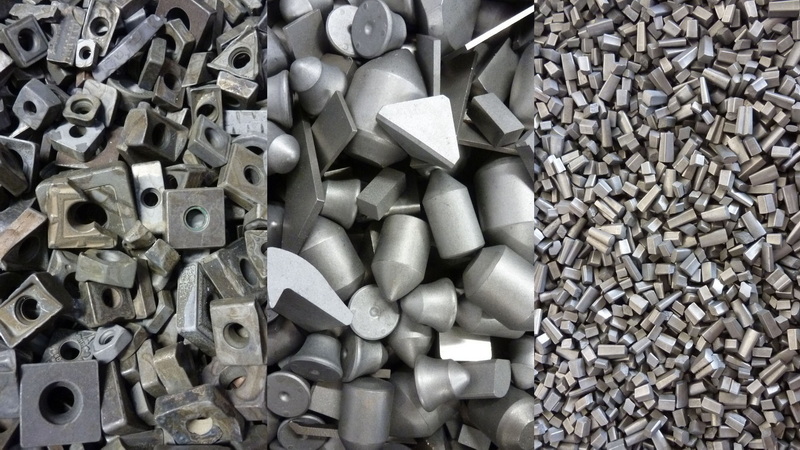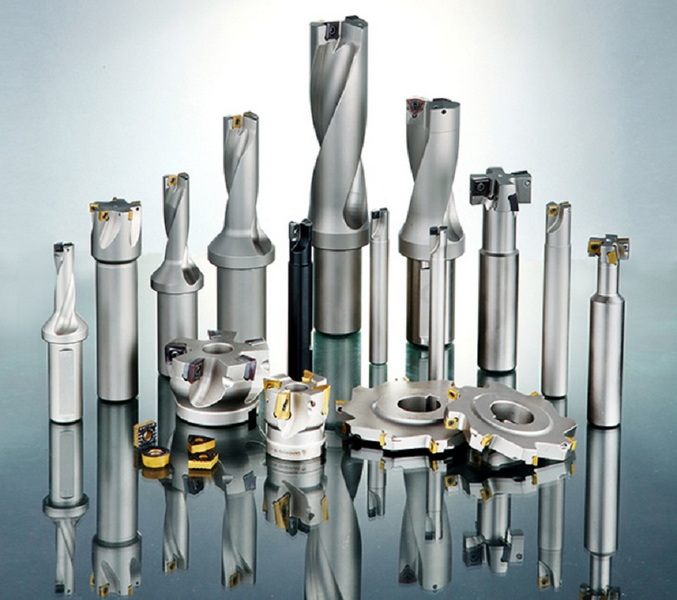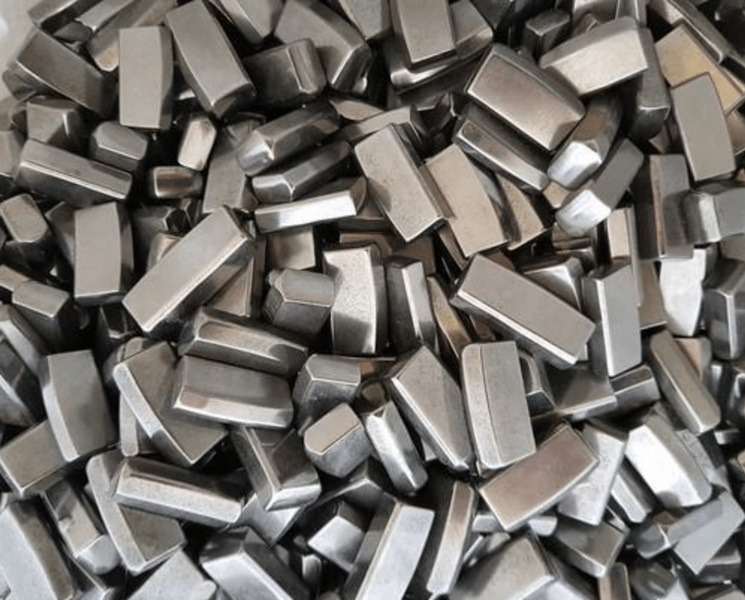Content Menu
● The Nature of Tungsten Carbide
● Chemical Properties
● Physical Properties
● Synthesis of Tungsten Carbide
● Applications of Tungsten Carbide
>> Cutting Tools
>> Wear-Resistant Components
>> Injection Molding Tools
>> Other Applications
● Tungsten Carbide vs. Other Materials
● Environmental and Health Considerations
● Future Prospects
● Conclusion
● FAQ
>> 1. What is the chemical formula of tungsten carbide?
>> 2. How does tungsten carbide compare to diamond in terms of hardness?
>> 3. Can tungsten carbide be recycled?
>> 4. What are some common applications of tungsten carbide in everyday life?
>> 5. Is tungsten carbide dangerous to human health?
● Citations:
Tungsten carbide, a remarkable material with exceptional properties, has been the subject of much scientific inquiry and industrial application. This article delves into the nature of tungsten carbide, exploring its composition, properties, and various uses to answer the fundamental question: Is tungsten carbide a compound?

The Nature of Tungsten Carbide
Tungsten carbide (WC) is indeed a chemical compound formed by the precise combination of tungsten and carbon atoms[1]. It consists of tungsten and carbon atoms arranged in a hexagonal crystal structure, typically containing approximately 94% tungsten and 6% carbon by weight[4]. This composition classifies tungsten carbide as a true compound, where the elements are chemically bonded in a specific ratio.
Chemical Properties
The chemical properties of tungsten carbide further confirm its status as a compound:
1. Stoichiometric Ratio: Tungsten carbide has a defined chemical formula (WC), indicating a fixed ratio of tungsten to carbon atoms[1].
2. Distinct Properties: As a compound, tungsten carbide exhibits properties that are distinct from its constituent elements. For instance, while tungsten is a metal and carbon is a non-metal, tungsten carbide displays ceramic-like properties[4].
3. Chemical Reactions: Tungsten carbide undergoes specific chemical reactions that are characteristic of its compound nature. For example, it oxidizes at temperatures between 500-600°C and reacts with hydrofluoric acid/nitric acid mixtures above room temperature[1].
Physical Properties
The physical properties of tungsten carbide further underscore its compound nature and contribute to its wide range of applications:
1. Melting Point: Tungsten carbide has a high melting point of 2,870°C (5,200°F), which is different from the melting points of pure tungsten or carbon[7].
2. Hardness: With a Mohs hardness of 9 to 9.5 and a Vickers hardness of about 2600, tungsten carbide is one of the hardest materials known, second only to diamond[7].
3. Density: Tungsten carbide has a high density, contributing to its stability and wear resistance in high-impact environments[4].
4. Thermal Properties: It exhibits excellent thermal conductivity (110 W/m·K) and a low coefficient of thermal expansion (5.5 μm/m·K)[1].
Synthesis of Tungsten Carbide
The synthesis process of tungsten carbide further confirms its compound nature. It is typically manufactured as an ultra-fine ceramic powder through a carefully controlled process:
1. Powder Production: Tungsten and carbon are combined in precise ratios to form tungsten carbide powder[4].
2. Agglomeration: The powder is often agglomerated or fused with a metallic binder such as cobalt, cobalt chromium, or nickel to enhance its properties[4].
3. Sintering: The agglomerated powder is then sintered at high temperatures to form solid tungsten carbide components[1].
This controlled synthesis process results in a material with consistent properties, characteristic of a true compound.
Applications of Tungsten Carbide
The unique properties of tungsten carbide as a compound make it invaluable in various industrial applications:
Cutting Tools
Tungsten carbide is extensively used in the manufacture of cutting tools due to its hardness and wear resistance[8]. These tools include:
- Drills
- Milling cutters
- Taps
- Cutting wheels
- Saw blades
Wear-Resistant Components
Many industries rely on tungsten carbide for components that must withstand extreme wear and corrosion:
1. Oil and Gas Industry: Drill bits and other drilling equipment[8]
2. Mining Industry: Rock drilling bits and crusher parts[8]
3. Aerospace: Turbine components[4]
Injection Molding Tools
The precision and durability of tungsten carbide make it ideal for injection molding tools used in plastic manufacturing[8].
Other Applications
1. Armor-piercing ammunition[2]
2. Ballpoint pen tips[2]
3. Jewelry and watches[2]
4. Electrical components[2]
5. Space satellite components[2]

Tungsten Carbide vs. Other Materials
To further illustrate the unique nature of tungsten carbide as a compound, let's compare it to other materials:
| Property |
Tungsten Carbide |
Steel |
Titanium |
Diamond |
| Hardness (Mohs) |
9-9.5 |
4-4.5 |
6 |
10 |
| Density (g/cm³) |
15.6 |
7.8 |
4.5 |
3.5 |
| Melting Point (°C) |
2,870 |
1,370-1,530 |
1,668 |
3,550 |
| Young's Modulus (GPa) |
530-700 |
200 |
116 |
1,050 |
This comparison highlights how tungsten carbide, as a compound, possesses a unique combination of properties that set it apart from both its constituent elements and other materials.
Environmental and Health Considerations
While tungsten carbide is a stable compound, its production and use do have some environmental and health implications:
1. Mining Impact: The extraction of tungsten can have environmental impacts, including habitat disruption and water pollution.
2. Energy Intensive Production: The high temperatures required for tungsten carbide production contribute to its carbon footprint.
3. Occupational Health: Workers in tungsten carbide production may be exposed to dust, which can pose respiratory risks if proper safety measures are not implemented.
4. Recycling: Fortunately, tungsten carbide is highly recyclable, which helps mitigate some of its environmental impacts[5].
Future Prospects
As a compound with exceptional properties, tungsten carbide continues to be the subject of research and development:
1. Nanostructured Tungsten Carbide: Researchers are exploring nanostructured forms of tungsten carbide for enhanced properties and new applications.
2. Sustainable Production: Efforts are being made to develop more environmentally friendly production methods for tungsten carbide.
3. New Composites: Scientists are investigating new composites incorporating tungsten carbide for specialized applications in aerospace and other high-tech industries.
Conclusion
In conclusion, tungsten carbide is indeed a compound, formed by the chemical bonding of tungsten and carbon atoms in a specific ratio. Its unique chemical and physical properties, distinct from those of its constituent elements, firmly establish its status as a compound. The carefully controlled synthesis process, specific chemical reactions, and wide range of applications further confirm this classification.
Tungsten carbide's exceptional hardness, wear resistance, and thermal properties make it an indispensable material in modern industry. From cutting tools and wear-resistant components to specialized applications in aerospace and electronics, tungsten carbide continues to play a crucial role in technological advancement.
As research continues, we can expect to see new developments in tungsten carbide technology, potentially leading to more efficient production methods, enhanced properties, and novel applications. The compound nature of tungsten carbide, combining the best attributes of its constituent elements, ensures its continued importance in materials science and engineering for years to come.

FAQ
1. What is the chemical formula of tungsten carbide?
The chemical formula of tungsten carbide is WC, representing one atom of tungsten bonded to one atom of carbon[1].
2. How does tungsten carbide compare to diamond in terms of hardness?
Tungsten carbide is extremely hard, ranking about 9 to 9.5 on the Mohs scale, making it the second hardest material after diamond, which has a Mohs hardness of 10[1][7].
3. Can tungsten carbide be recycled?
Yes, tungsten carbide is highly recyclable. Its scrap is considered one of the best candidates for recycling in its class, making it valuable for various applications[5].
4. What are some common applications of tungsten carbide in everyday life?
Tungsten carbide is used in various everyday items, including ballpoint pen tips, jewelry, watches, and some sports equipment like golf club heads[2].
5. Is tungsten carbide dangerous to human health?
While tungsten carbide itself is generally stable and not directly harmful, the dust produced during its manufacture or processing can pose respiratory risks if inhaled. Proper safety measures should be implemented in industrial settings where tungsten carbide is produced or used.
Citations:
[1] https://en.wikipedia.org/wiki/Tungsten_carbide
[2] https://www.tungco.com/insights/blog/5-tungsten-carbide-applications/
[3] https://jdn.ucas.ac.cn/public/uploads/files/621b288368bc8.pdf
[4] https://www.linde-amt.com/resource-library/articles/tungsten-carbide
[5] https://www.carbide-usa.com/top-5-uses-for-tungsten-carbide/
[6] https://www.dawen.ink/news/view/1117
[7] https://www.vedantu.com/chemistry/tungsten-carbide
[8] https://www.sollex.se/en/blog/post/about-cemented-tungsten-carbide-applications-part-1
[9] https://www.sohu.com/a/625819940_490529
















